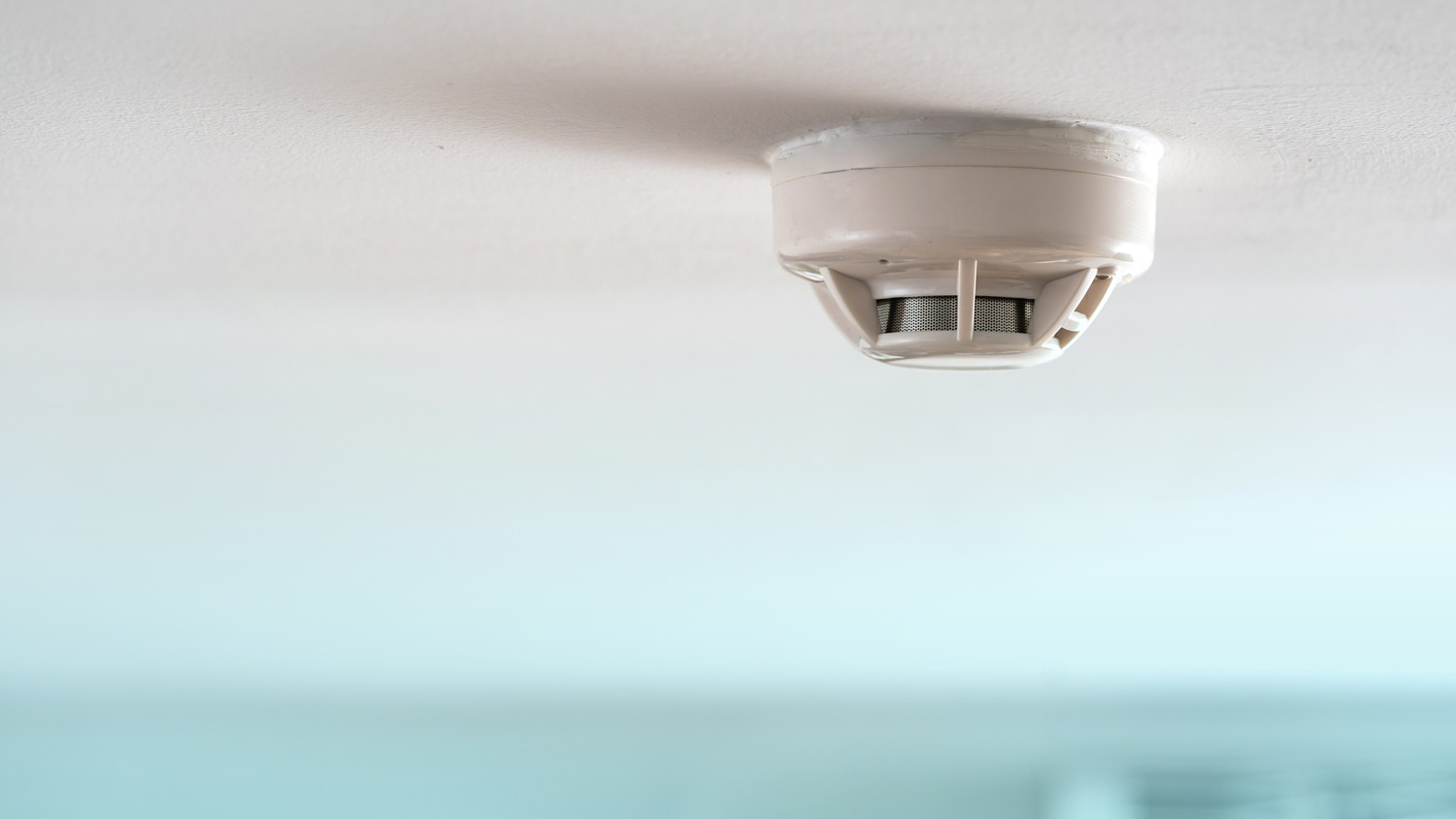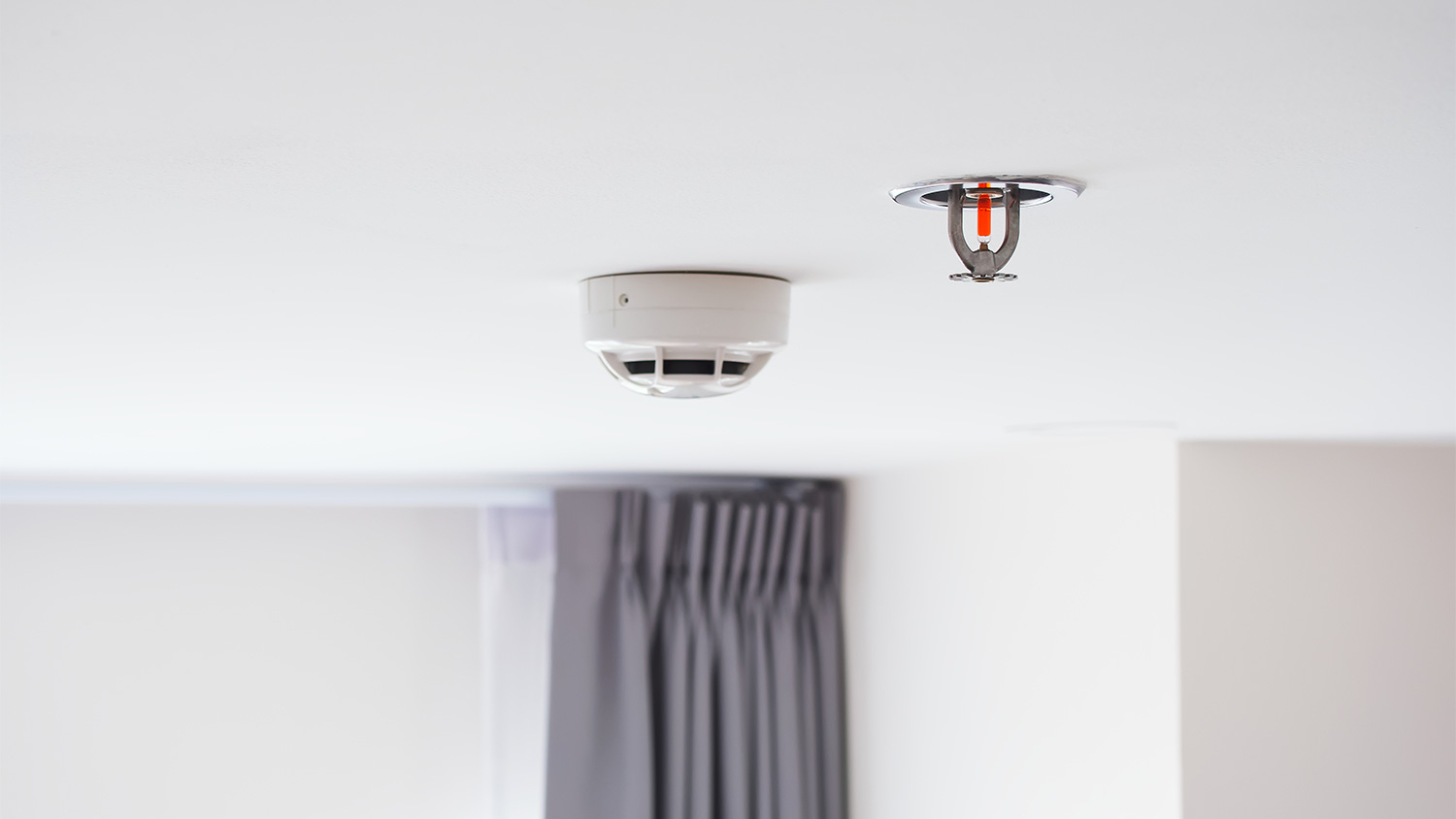
Who installs smoke detectors? Learn whether to call an electrician, handyperson, or security pro—and what it costs. Start your pro search now
Fire sprinkler systems cost an average of $782


Installing a home fire sprinkler system costs an average of $252 and $1,318, with most homeowners spending an average of $782.
Home fire sprinkler system costs depend on home size, system features, and installation complexity.
Regular inspections and maintenance visits also influence the total cost.
Fire sprinkler systems mitigate the spread of fires, reducing property damage and personal injury.
Budgeting and hiring licensed professionals ensure optimal safety and compliance with local codes.
This article was updated using automation technology and thoroughly reviewed for accuracy by HomeAdvisor Editor Ryan Noonan.
On average, you’ll spend between $252 and $1,318 to install a residential fire sprinkler system, with most homeowners paying an average cost of $782. Your final price depends on factors like your home’s square footage, system quality, and how often you schedule inspections or maintenance. Basic setups start as low as $105, while feature‑rich systems with multiple detectors and alarms can climb to $4,210. Plan ahead and hire a licensed pro to make sure the installation is safe, code‑compliant, and built to last.
Your home’s size and the system you choose are the biggest cost drivers, followed by pipe material, labor, and any add‑ons.
If you have a larger home, expect to pay more. Bigger layouts need additional piping and sprinkler heads, which raises material costs and extends installation time, both of which boost labor fees.
Pipe material is an important cost factor in determining the price of your fire sprinkler system installation. Here are the average costs for common pipe materials.
| Material | Average Cost per Sq. Ft. |
|---|---|
| CPVC or PEX | $1–$2 |
| Copper | $3–$4 |
| Mix | $1–$2 |
Homes on a municipal water supply often require a backflow preventer, which costs between $75 and $350. If your water pressure is low, adding a booster pump can tack on another 20% to 25%.
Water storage tanks store water and supply it to fire protection systems. They’re often used when water isn’t readily available or an adequate water supply doesn’t exist.
Homeowners install backflow preventers when a public water supply is available. However, this water supply is vulnerable to contamination from fertilizers and other groundwater pollutants. Therefore, they create a safe water supply for home fire prevention systems.
Fire sprinkler systems come in two styles: standalone and multipurpose. Standalone models rely on a dedicated pipe network just for fire protection, so they cost more. Multipurpose systems share your existing plumbing, making them a more budget‑friendly choice.
Standalone fire sprinkler systems are your most expensive option. They require a dedicated set of pipes that connect to the primary water source.
Multipurpose systems share the existing household plumbing and do not require a professional to install dedicated piping, making them a more affordable choice.
Installing a system during new construction runs an average of $0.50 to $3 per covered square foot and is easier on your wallet because the contractor can integrate the pipes before the walls go up.
Adding a fire sprinkler system to an existing home is more expensive, costing between $2 and $7 per square foot. The elevated prices are due to the additional demolition and reconstruction work that’s often required.
| Type of Home | Average Cost per Sq. Ft. |
|---|---|
| New home | $0.50–$3 |
| Existing home | $2–$7 |
| High rise | $4 |
Labor rates vary depending on your location and the type of system you choose. Most local fire sprinkler system companies charge based on your home size, ranging from $1 to $2 per square foot for labor alone. For complex systems, labor rates can be as high as $4 to $7 per square foot.
Beyond a sprinkler system, you can add other layers of protection to keep your home and family safe if a fire starts.
| Protection Type | Average Cost Range |
|---|---|
| Fire extinguisher | $100–$500 |
| Fire blanket | $10–$100 |
| Smoke detector | $15–$65 |
| Heat sensor | $60–$100 |
| Carbon monoxide detector | $15–$150 |
Expect to spend $100 to $500 for a new extinguisher, plus $30 to $100 each year for inspections and maintenance. Pairing extinguishers with your sprinkler system gives you an extra line of defense.
Fire‑resistant blankets run $10 to $100. Most can handle temperatures up to 900 degrees and smother small fires quickly. They last about seven years and require no ongoing maintenance.
Smoke detectors cut the risk of a fatal house fire by giving you an early warning. Installation costs between $10 and $65. Replace each unit every 10 years and swap the batteries every three months, which adds roughly $10 to $25 a year.
Heat sensors detect smoke and sudden temperature spikes. Installation costs range from $60 to $100 per sensor. If you add a heat sensor to your home’s fire alarm systems, you may also have to pay for a monthly monitoring service.
Carbon monoxide detectors alert household members when an unsafe amount of CO, a colorless, odorless, and poisonous gas, is present in the home. Installing a carbon monoxide alarm ranges from $15 to $150. You’ll need to replace your monitor every five to seven years.
A sprinkler system doesn’t boost your home’s appraised value, but it can make the property more appealing, especially in high‑risk fire zones. Many insurers also reward sprinkler‑equipped homes with discounts of 5% to 30%.
While installation costs vary significantly, fire sprinkler systems are an important investment in your home’s safety and protection. To keep the project as budget-friendly as possible, consider the following tips:
Gather quotes from at least three local contractors so you can compare pricing and scope.
Choose wallet‑friendly pipe materials such as CPVC or PEX.
Ask your insurance carrier whether installing sprinklers qualifies you for premium discounts.
Go with a multipurpose system instead of a standalone layout to trim material and labor costs.
No place is more important than your home, which is why HomeAdvisor connects homeowners with local pros to transform their houses into homes they love. To help homeowners prepare for their next project, HomeAdvisor provides readers with accurate cost data and follows strict editorial guidelines. After a project is complete, we survey real customers about the costs to develop the pricing data you see, so you can make the best decisions for you and your home. We pair this data with research from reputable sources, including the U.S. Bureau of Labor Statistics, academic journals, market studies, and interviews with industry experts—all to ensure our prices reflect real-world projects.
From average costs to expert advice, get all the answers you need to get your job done.

Who installs smoke detectors? Learn whether to call an electrician, handyperson, or security pro—and what it costs. Start your pro search now

Who installs fire sprinkler systems? Learn why hiring a licensed plumber is best, what to expect, and how much installation may cost.

Budget for smoke detector installation costs based on factors such as detector type, power source, special features, labor, and more.